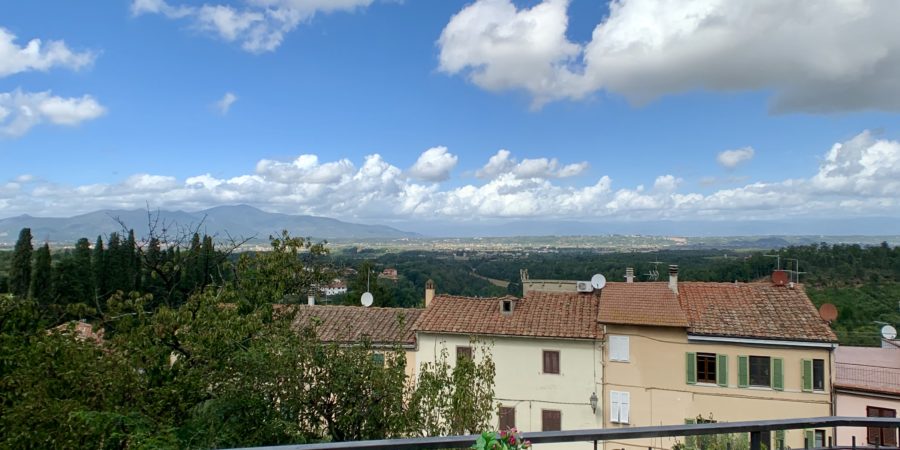Soak up alllll the info. That’s my style. So I did a ton of research on how best to get around to all the lakes, and pretty much all of the blogs & vlogs we found suggested a car rental, particularly for the northern lakes area.
There were a couple times I think we could have gone without a car (mainly in Venice where it’s totally unusable and we had to pay to park it for two days), but if we were do it over again, I would still rent a car. I just might turn the car in and then get a new one after Venice.
Our route was about 1,000 miles, plus some local travel. Here is where we drove:
- Start: Milan (Malpensa Airport)
- Lake Maggiore
- Lake Lugano
- Lake Como
- Lake Garda
- Verona
- Venice
- Parma
- Bologna
- Florence
- Pisa
- Cinque Terre
- Genoa
- Return: Milan (Malpensa Airport)
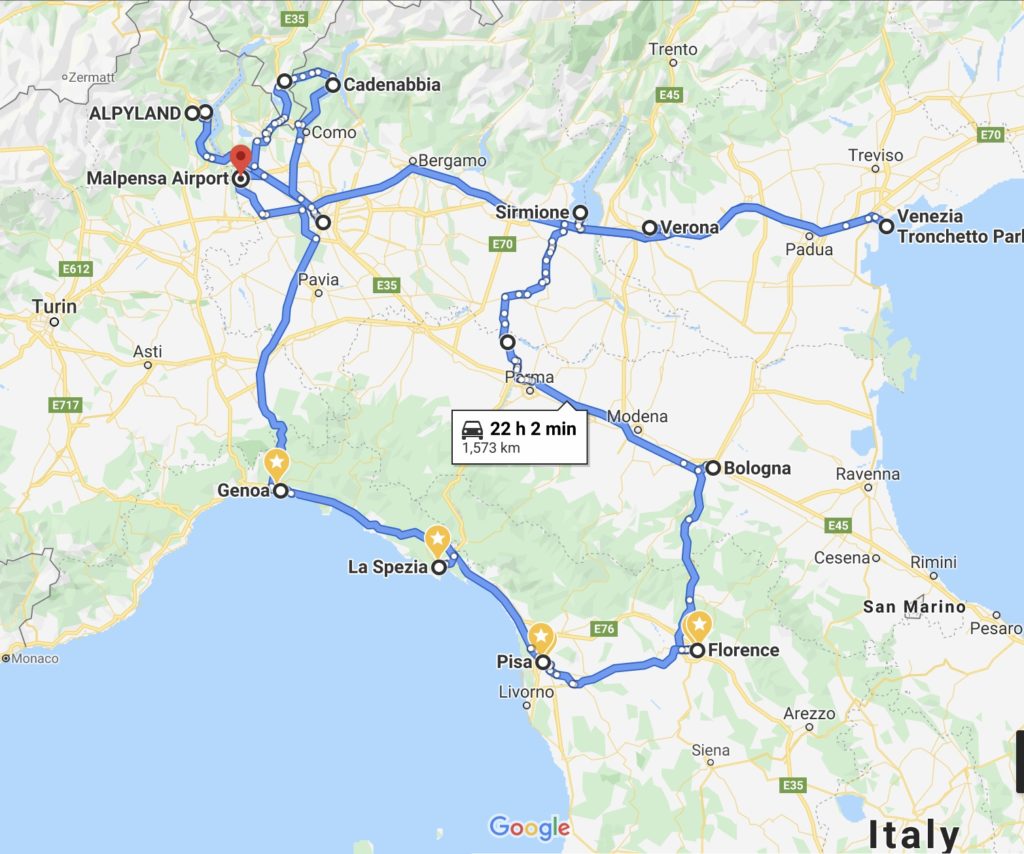
Car Rentals in Italy
From the minute we decided to drive, I had really pictured us roaming around Italy in one of those little red Fiats. I mean, of course! We rented from Avis, and I crossed my fingers. For 10 days, with the Avis Preferred discount, our rental cost was ~$270.00 USD.
*When you reserve your car for Italy (and really anywhere in Europe), make sure you pay attention to manual vs. automatic. Most of their cars are manual (especially the cheaper options), and if you don’t know how to drive a stick shift, you’ll have major issues.
Insurance
We found out that Italy requires you to carry basic collision coverage, which explained why it was included in the rental when we booked it instead of it being an option at the counter. Our credit card (Chase Sapphire Reserve) offers collision coverage if you pay for the car with the card, which we did. When I called them to find out more, they shared that their coverage would come into play after the rental car company’s basic collision coverage was used, so it is essentially an additional level of protection. However, in order to get the benefit, you CANNOT buy-up at the rental company. Doing so would void the card’s benefit.
Pick up & Drop off
With Avis Preferred, we were able to skip the main counter in the Milan airport and go to the lot counter instead, which avoided a long line. In about 15 minutes we were off in our silver Fiat 500. Good thing we didn’t get one of the little ones I wanted… it turns out those are way too small for 2 large suitcases! The Fiat we got was good for us – small, but big enough for our stuff, and gas mileage was decent at about 30-31 mpg. In our whole trip, we filled up 2.5 times.
Returning the car to Avis was pretty simple as well. They do a look over, check the gas, and then send you on your way!
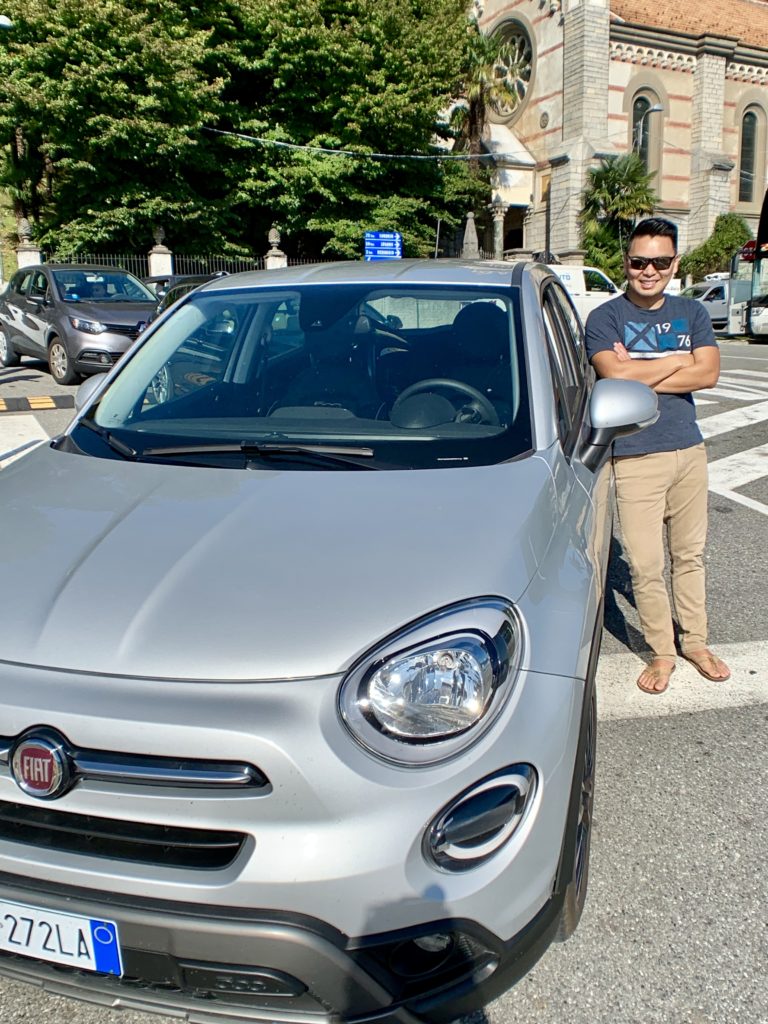
Driving in Italy
This was quite an experience! My husband is a lot more easy going than I am, so the combination of the two of us was probably good. I was anxious about all the rules, and his attitude was more like “screw it, we’ll find out later!”
Important note: he drives in Europe for work sometimes and occasionally gets tickets in the mail from the rental companies… hmm…
I am happy to report that 5 months later, we never received a bill from our rental company. Phew!
Things to be Aware of…
Watch your speed.
There are cameras and average speed trackers, etc. and you don’t want a speeding ticket in the mail. Especially since the rental car company might charge you extra for having to deal with it. (Their car, their license plate, their ticket – your problem).
If you drive the speed limit, you need to be in the right lane and pass on the left. The left lane is not intended for driving – it’s really just for passing – so Italian drivers will tailgate you until you move over.
If you see someone flash their lights/brights at you coming from the other direction, it’s most likely a warning of a speed trap or cop ahead.
We used Waze for most of our driving because it shows the speed limit and your speed (ours was about 3 km/hour slower than our car’s speedometer, so make sure you’ve identified whichever speedometer will allow you to be most conservative on your speed).
The ZTL.
My greatest source of anxiety when driving in Italy was the ZTL. In every city center and many small residential areas, there are restricted Zones where you cannot drive without a pass. Unless you KNOW you’ve purchased a pass, you need to abide by the restrictions. And purchasing a pass wasn’t super clear to us and has its own requirements.
If your hotel is within a ZTL, ask them ahead of time how they handle it. My best advice? For everywhere you plan to go, research ahead of time a parking lot that is outside of the ZTL and put that in your GPS rather than the point of interest. For the locations we went to in the main cities, I tried to list the parking lot we parked in.
Also, Waze is pretty good about providing route options that exclude the ZTL, but you may need to click on the routes to find out. There’s a lot on the internet about ZTLs, so I’m not going to write much more about it, just that you need to do your research ahead of time – check the zones, the times, etc., and PLAN AHEAD.
Tolls, tolls, tolls.
Tolls need to be factored in to your budget. Between each city, we took the freeway (Autostrade) and almost every one required at least one toll if not more.
On most of the tollways, you’ll collect a ticket, which you need to keep and then insert when you exit that route. Then it will provide you the amount owed. Our tolls were anywhere from €1 to €20, depending on where we went and how long we drove on the autostrade. The highest toll for us (€20) was between Venice and Parma.
I found this website after we got home: http://www.autostrade.it/autostrade_en-gis/percorso.do so this could help you plan ahead. You can pay via cash (€) or card. We had no issues paying with our credit card, but other blogs reported issues.
Parking
This is pretty much always paid. Most lots (Parcheggio) have a machine for card payments, but we often had issues paying via credit on a particular machine that was common in many lots. If you don’t pay with a card, you need to pay with coins. Make sure you keep coins handy just in case.
When I booked the hotels, I knew we would be driving, so I looked for hotels with free parking or rates €10 or lower. Some hotels don’t offer parking at all – you need to do this research before booking and select your accommodations accordingly.
Filling Up Your Tank in Italy
Just a few things to consider regarding fuel as you’re planning your trip.
It’s expensive!
Our rental needed unleaded gas (95 in Italy) which was more expensive than the typical diesel. Make sure you check your paperwork or the inside door of the gas tank to see what your rental requires so you fill up with the right stuff!
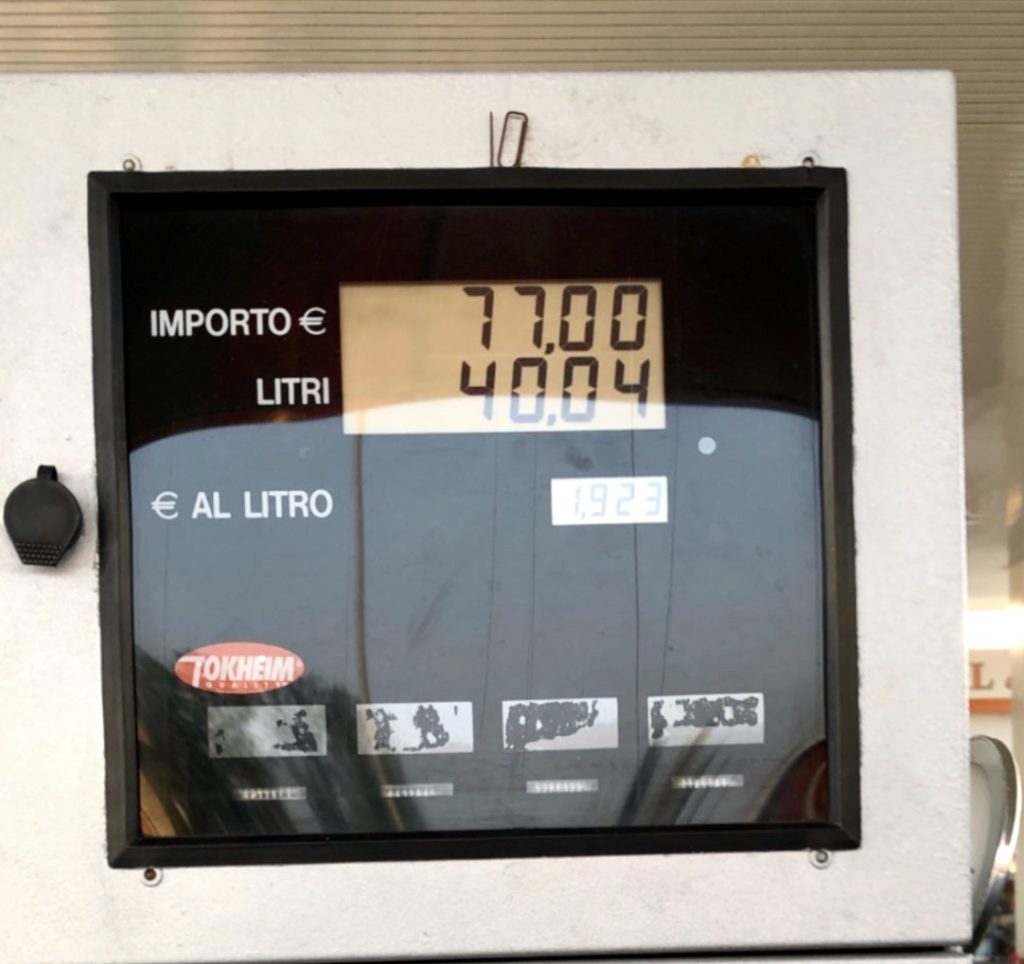
A full fill-up for our Fiat 500 was around 40-44 Liters and approximately €75, or $84 USD.
Full Service vs. Self Service
Another thing we learned about the gas stations is that they have both self service and full service. The full service (they pump it for you) is another €0,15 – €0,20 per Liter. Yikes! We made that mistake once and not again. Pull up to the correct pump based on what you want.
Pump then Pay
Most of the time, you will fill up your tank first, then pay. Make sure to remember your pump number when you go inside.
So… what should I do?
Generally speaking, do some Google searches on driving in Italy before you decide what will be best for your trip. Some travelers prefer public transportation, trains, taxis.
For this trip, we planned to move every day or two and we also wanted to be able to enjoy the views along the lakes. We prefer to be flexible, go where we want when we want, and carry a lot of crap with us (too much crap to lug on public transportation every day!), so a rental car was ideal.
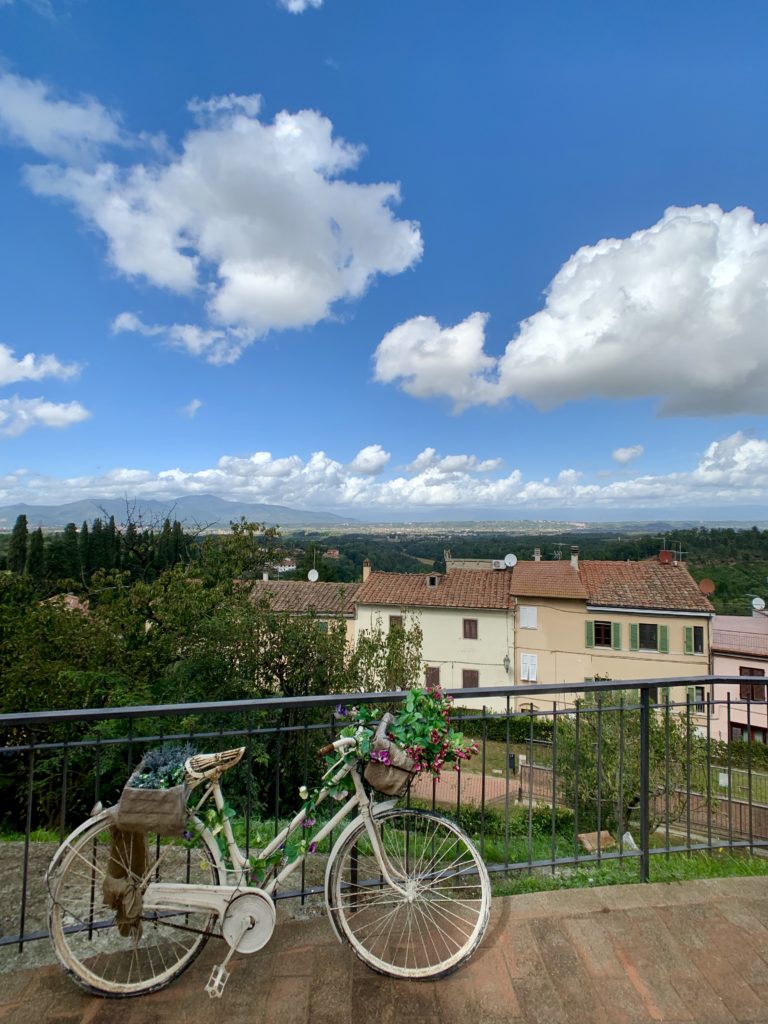
I really think the “right way” depends on your style of travel. If you’re only going to a couple of cities, or you travel light, trains and public transportation might be great for you! For us, we decided we would absolutely drive again if we did it all over.
If you want to learn more about our trip, check out the other posts! Happy Traveling!
XO,
J

